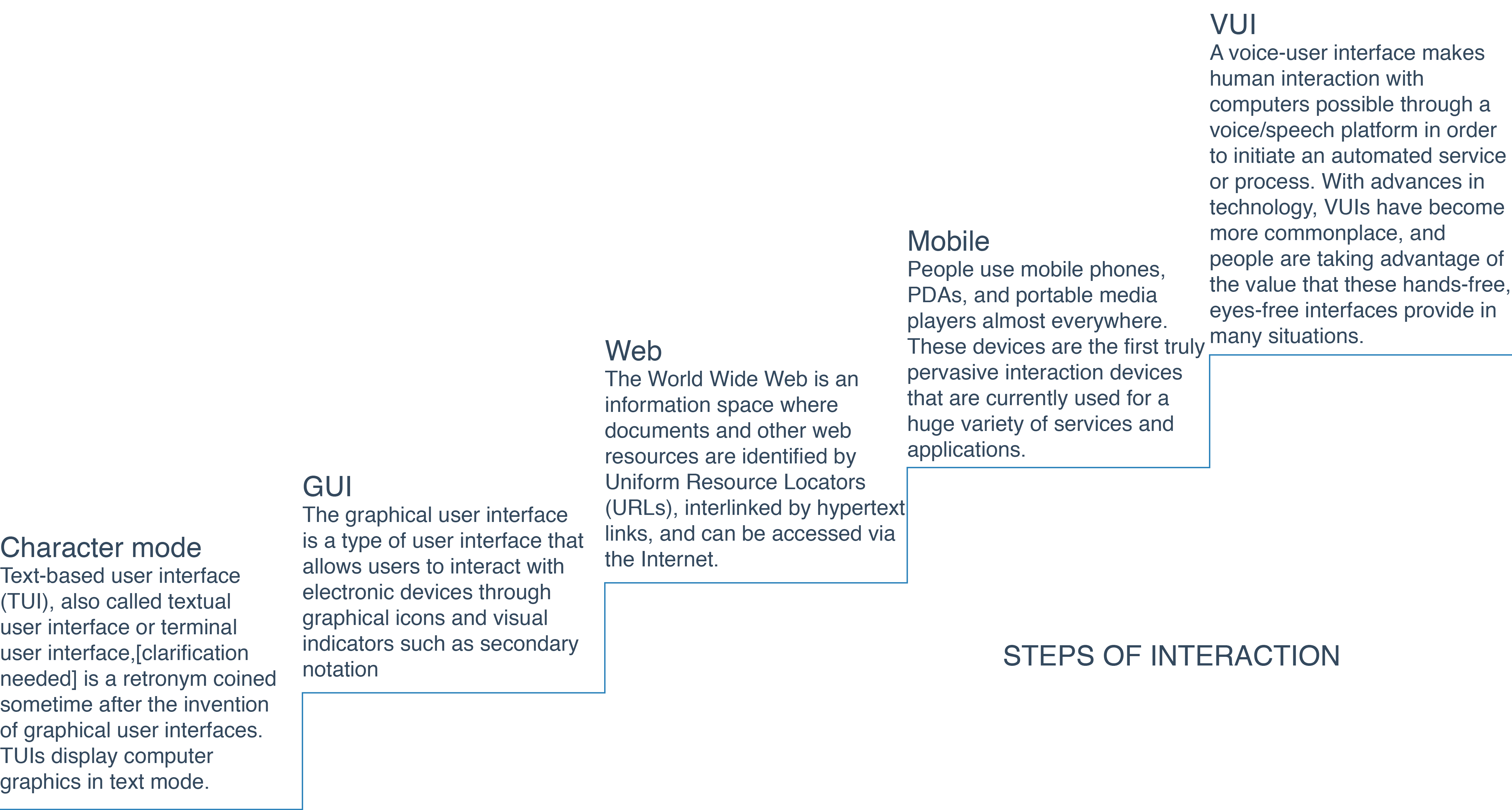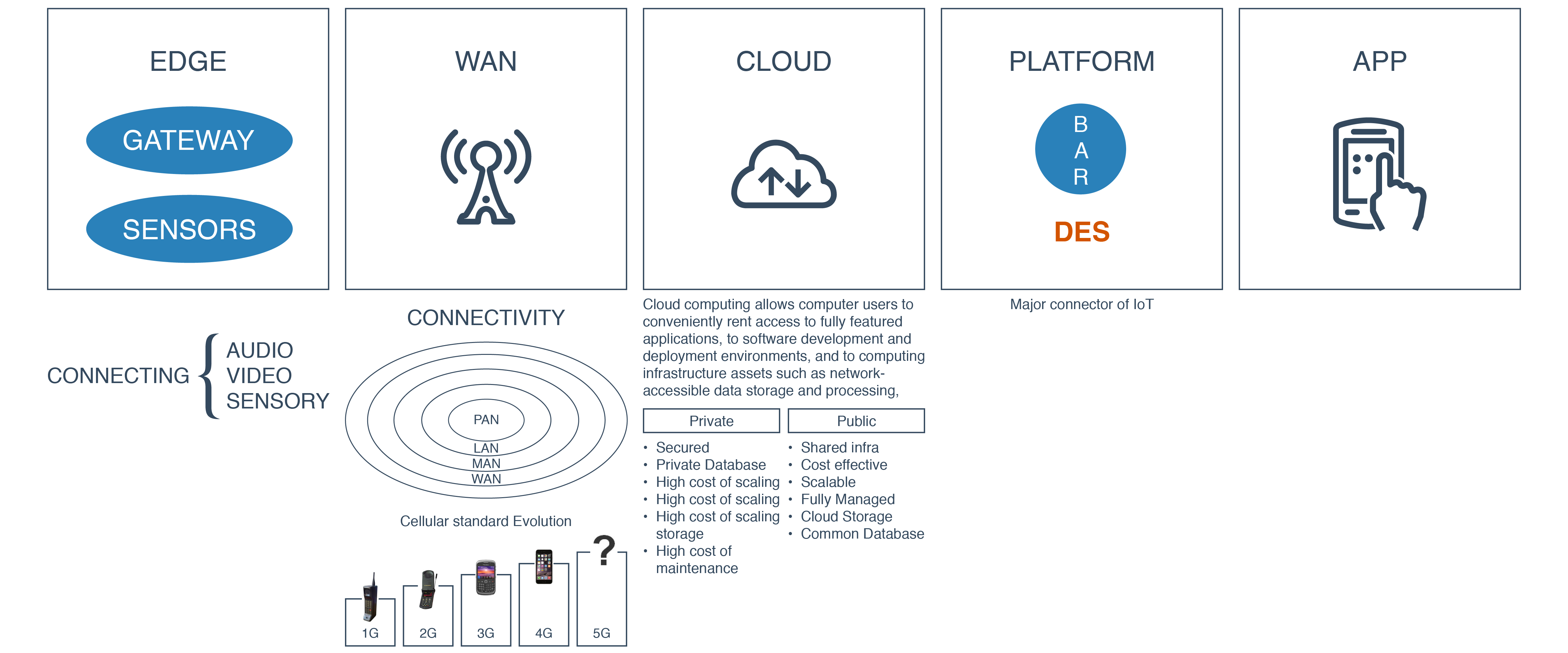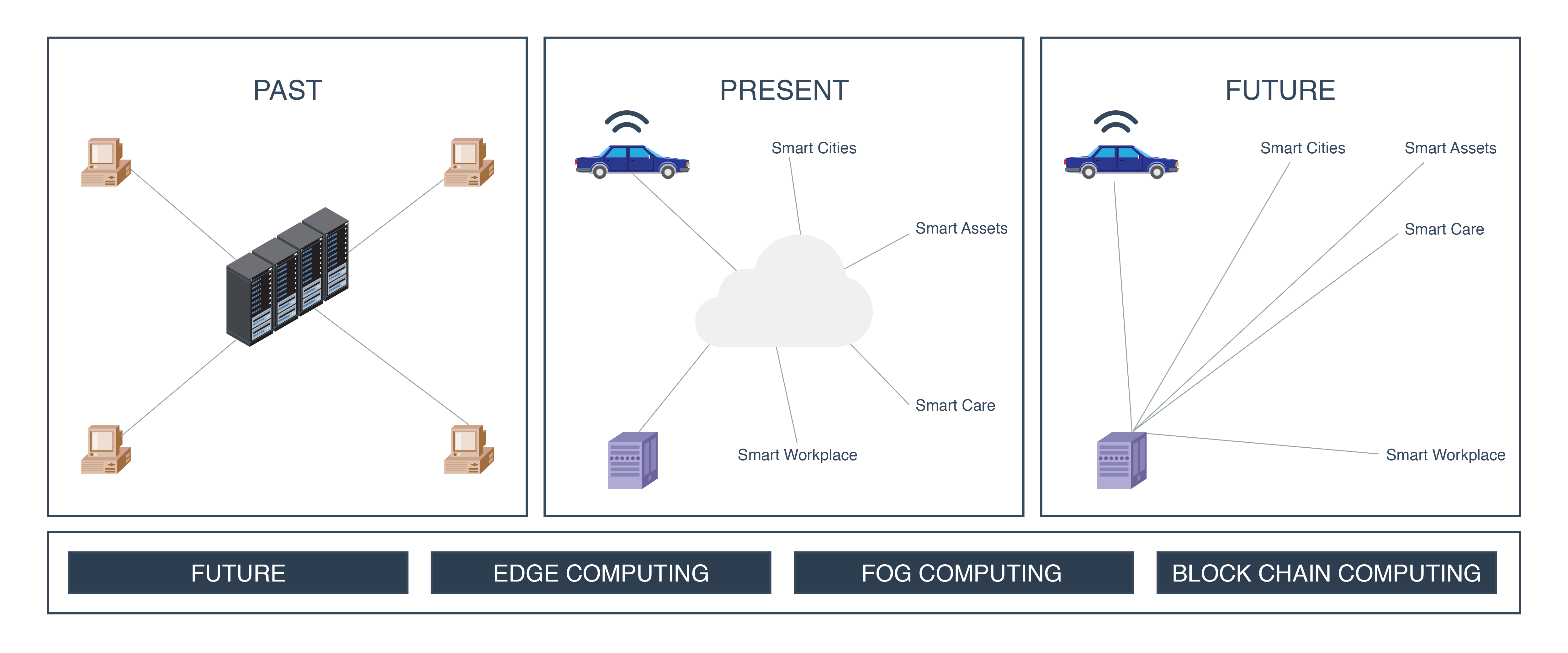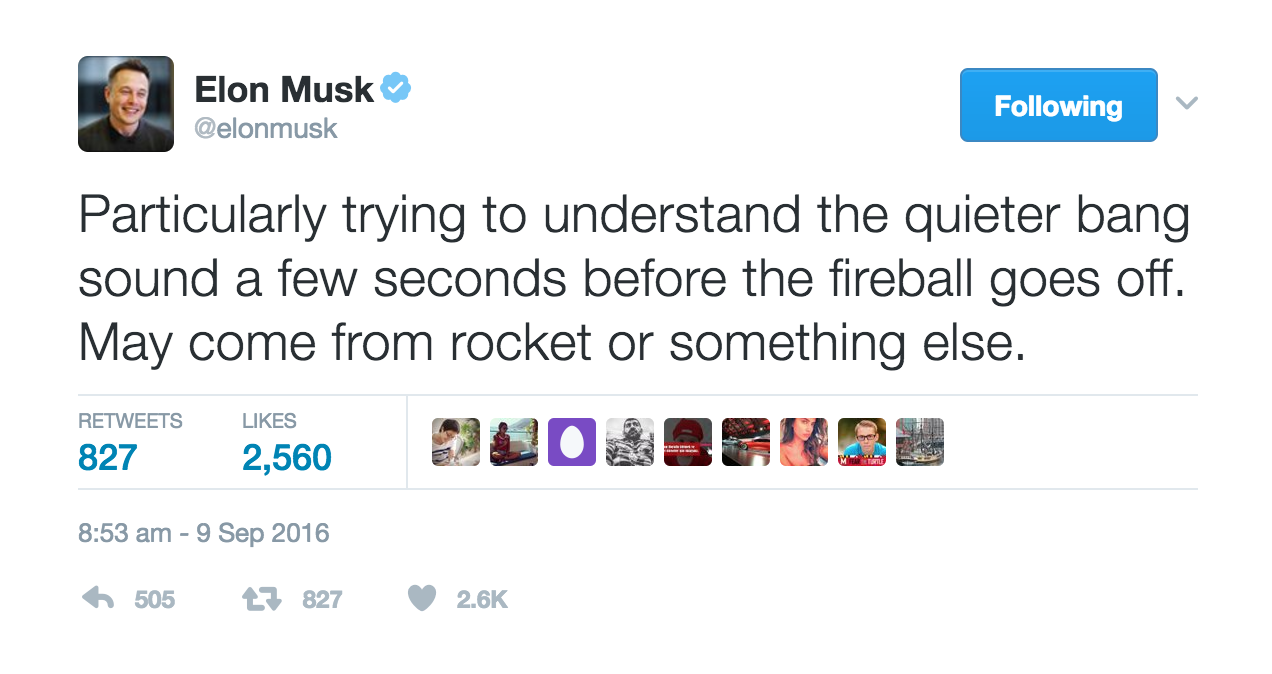IoT Tech expo is definitely the most techy show I’ve ever been to. I usually stick to design/development conferences, because that’s mainly what I do, but when I saw the event invitation on (I think it was) Twitter, I jumped at the chance to broaden my IoT knowledge. The conference spanned over two days and was located at Olympia, London. Thankfully, the talks I was most interested in were accessible for free. There were so many to choose from that if you’re not interested in specific sectors, going with the free pass is more than enough. I decided to stick with the “Developing for the IoT” and “IoT Innovations & Technologies” talks, as they’re nearest to my profession.
Developing for the IoT
1. Strategic choices and the next generation of IIoT user experience
John Schaefer, SVP, ThingWorx R&D
Smart connected products dramatically increase opportunities for value creation and higher productivity throughout the economy. You can create a whole new generation of lean, driving out the waste.
Physical experience relates to observable / how we interact
Digital experience is whenever an individual interacts with a brand through technology – smart watch, mobile, desktop, wearables, beacons, etc. User experience is not just with a computer. It’s how we experience everything around us.
Big data analytics
We have to learn how to collect and use data. Collect, analyze and present. See how we interact with our physical environment.
New ways to interact with systems and experts:
- Transcend space and time
- Deliver the best data to the right person
Decision Making
System 1 and System 2 are two distinct modes of decision making:
- System 1 is an automatic, fast and often unconscious way of thinking. It is autonomous and efficient, requiring little energy or attention, but is prone to biases and systematic errors.
- System 2 is an effortful, slow and controlled way of thinking. It requires energy and can’t work without attention but, once engaged, it has the ability to filter the instincts of System 1.
Minds + Machines – Driving service efficiency with analytics and augmented reality
2. Keynote Panel: The future of IoT development
Moderator: Christina Patsioura, Research Analyst, Beecham Research
Fredrik Ostbye, VP Internet of Things, Telenor Group
John Schaefer, SVP, ThingWorx R&D
Jurgen Hase, CEO, Unlimit by Reliance
Assembling a solution
Creating a platform doesn’t usually mean doing the whole thing from scratch. You use bits of the tech already there and add your own (or new) technology.
“Doesn’t have to be a revolution, but it has to be the next level of technology.”
John Schaefer
Biggest growth potential
- Medical devices – The health sector has been doing them for a while but there are a lot of new opportunities. [User analytics should be done in every industry – we are not collecting enough data]
- Automotive industry – has been ‘connected’ for some time, but is still maturing into IoT
- Utility companies – Already doing smart meters. The next step is Smart Cities – not jus utility services.
- Manufacturing – It’s a traditional industry that’s going into IoT. They’re trying to find the ecosystems with infrastructure and technology that they need. The main problem is finding partners. Technology isn’t the barrier, it’s the teams/people in the big companies – they have to change their mindsets.
- India – 1.3 billion people – this means that when you start doing something new – it’s like a tsunami. The government is very interested in smart cities, traffic management etc. [10,000 startup companies in the last 2 years]
Universal connectivity
The IoT is not only a massive undertaking to connect virtually everything around us in a massive analytics infrastructure, it also calls for a level of integration that is difficult to comprehend. Organizations struggle integrating within the data center, across distributed architectures and third-party infrastructure. The IoT pushes this challenge to an entirely new level by having to coordinate the data feeds of millions of commercial, industrial and consumer products across the globe. Without a standard protocol enabling the free flow of data from the field to back-end enterprise systems, it is hard to see how developers can effectively implement the necessary connectivity, security, and functionality required of the IoT.
There will be more consumer devices than industrial devices in the next few years.
Universal Standardisation
We are quite far from achieving universal standardization – and you shouldn’t hold your breath. Getting everyone on the same standards is nearly impossible to do. The procedures to get a new standard in take too long. Usually, a new product appears (e.g. the iPhone) and it becomes ‘the standard’.
Open source tools and open standards
[5 million developers developing only for IoT]
Developers are the ones creating the future. We just have to remember about security. Open-source tools and open standards can be too… open. The more contributing people, the better. Companies don’t have to go the whole way, but pieces should be open-source. Security is the main problem and should be taken into account from day one. It’s very hard to secure software when it’s finished.
3. Tools and platforms for end-to-end development
Google nest was supposed to be the best example of IoT – but one software update allowed it to be hacked.
We are living in a world where everything has a computer inside – even a hairdryer.
Dubot is a robotic arm that can be customised to fit any usability. You’ll soon be able to buy 20 of them, set them up in your garage and start your own company that can make a shoe, fully personalised in a couple of hours.
Security
In 2016 a widespread attack on the maintenance interfaces of broadband routers affected the telephony, television, and internet service of about 900,000 Deutsche Telekom customers in Germany.
Edward Snowden told us about bots that can go into any system without anyone knowing. We cannot disconnect everything to be secure. This is why security will be the biggest thing in the future. It’s not possible to make a perfect system but if something goes wrong you can fix it. You should take this into account at the beginning of the design process.
[No one is sending text messages or calling anymore – the future is about APPS.]
4. Voice control: Breakthrough in the smart home and IoT
Amazon Alexa
Amazon has a process called “Working Backwards”. Every time someone has a new idea, they start from writing a press release. Then they think about what technology is needed to make that press release a reality.
Introducing Echo Dot
A brief history of voice experience
Why voice?
Speech is the most immediate way of interacting. Easier and quicker than touch (writing, drawing). It’s also our most natural way of communication.
Voice is the next major disruption in computing.
Voice is here to stay
- Technological advances and democratization of access has led to the proliferation of voice experience
- User behaviour shifts indicate rapid mainstream adoption
- The Internet of Things is exponentially growing in all sectors
- Market size and business opportunity for voice + home is huge.
Alexa is an intelligent personal assistant developed by Amazon Lab126, made popular by the Amazon Echo. Capable of voice interaction, music playback, making to-do lists, setting alarms, streaming podcasts, playing audiobooks, and providing weather, traffic, and other real-time information. Alexa can also control several smart devices using itself as a home automation hub.
Voice is everywhere.
IoT Innovations & Technologies
1. Architecting end to end IoT solutions
Defining IoT
Inter- and Intra-connection of people and things in a seamless and secure way.
Creating an end to end application
Storage and Analytics
- Cloud storage is particularly important to enable the IoT as the storage requirements shall be multifold connecting millions of networked devices
- It’s elastic and accessible from anywhere and any device
The complexity of data is growing more and more. There is a lot of data that we can collect from sensors (e.g. in cars).
2. The sound of (machine) music: How deep learning on noise is disrupting Industrial IoT
GalCorfas, VP Business Development, 3DSignals
Musicians know when an instrument is out of tune – they can hear it. This has been used as an inspiration to listen to machines using the newest technology. Thanks to acoustics it’s possible to know when a machine might break down thanks to the noises it makes. An alert can be automatically sent to the service provider who can have new parts ready when the device is brought in by the customer.
In 2016 Elon Musk tweeted about a bang sound registered by a camera just before SpaceX catastrophe. This “bang” was investigated to find out what went wrong. Sound gives us a unique channel of insight.
In the automotive industry, one minute of downtime can cost a company up to $22,000. Sound can help. Traditional acoustic monitoring was done by an engineer listening to the device. Now we can put sensors into devices that can listen in round the clock and in hard to access places. And just like a parent is attuned to the specific cry of his child, these new monitors can be programmed to monitor one specific machine amid thousands standing in the same room.
TheMonitoring as a Service (MAAS) Platform:
- Listen – Live remote acoustic monitoring and visualization
- Detect – Anomaly detection OUT OF THE BOX
- Predict – Deep learning on detected anomalies
- Report – Condition and acoustic history
Applications are endless. It can be used with any technology – energy, production, automotive sector etc. It’s a unique channel and can sometimes pick up faults that thermal or vibration sensors won’t.
3. Panel: The role of hackers in innovating within IoT security
Moderator: Ian Hughes, Analyst, IoT, 451 Research
Darren Martyn, Security Researcher, Xiphos Research Limited
Adrian Winckles, Chapter Leader, Cambridge, OWASP
FC, CEO and Hacker, Redacted Firm
There are so many applications, levels, technologies that it’s not possible to create security that fits all. Industrial systems were here before the Internet so securing them is nearly impossible and very expensive. An IoT application that is secure does not exist – you can always find a way in. For apps to be secure – they can’t be connected – but they have to be.
“With enough time – Nothing is secure”
FC
IoT botnets crashed websites – they were there in the background, creeping in, unnoticed. Everything is already broken – it just takes time to notice it.
People should be trained and made aware of these dangers, but they’re not. It is easier to physically break into a bank than it is to hack your way in. But IoT is opening that up. Social engineering and default passwords are the main culprits of making stuff accessible.
The problem is that you can’t train a machine to pick up on a hack because it’s done in such a way that to a computer – it looks exactly like normal traffic – it’s not an anomaly.
Autonomous vehicles are particularly scary. Although looking at drivers in our times – the computer might be better. Problem is that computers tend to crash every so often – can we trust a car run by a machine?
Manufacturers should be the ones in charge protecting their products. Push for price leads to making unsecured devices. If the consumer makes the decision to buy a cheaper, less secure product then they have to take the responsibility.
[80% of the NHS is running on Window XP – which stopped being secure years ago]
The IoT tech expo was a valuable experience for me as it showed how far we’ve come with connecting everything and everyone. It’s a very exciting time for technology – and a scary one. With talks about computers in hairdryers that can be hacked to burn your house down, I think security should be the main priority of all companies dealing in IoT. I’ll definitely be keeping an eye on some of the speakers to learn more about the technology they are bringing to all the industries.
My favourite talk was ‘The role of hackers in innovating within IoT security’. Not only because I have a soft spot for white hackers, but also because they opened my eyes to the security issues we will face in the future.













